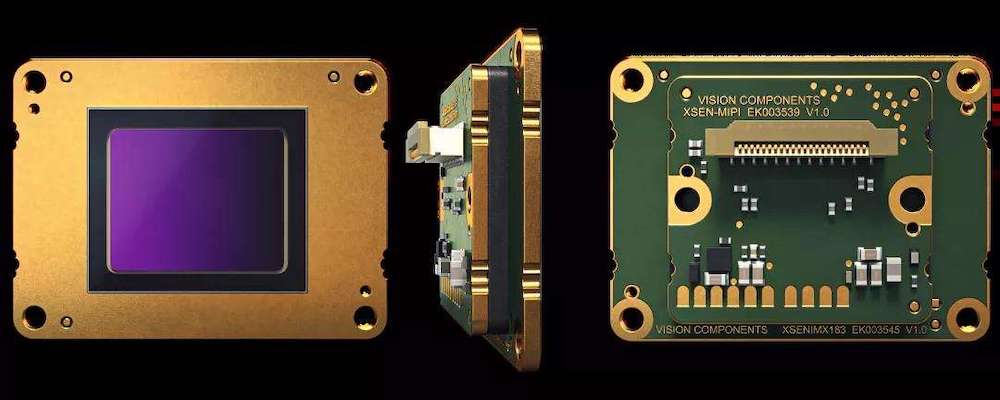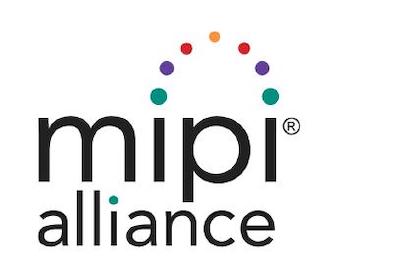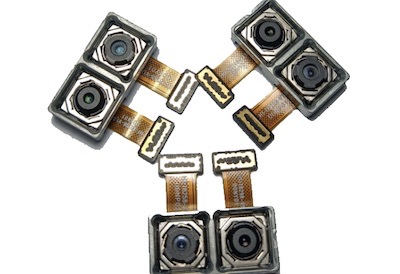Leading MIPI Camera Module Manufacturer
The MIPI camera module is commonly found in mobile phones and tablets and supports high-definition resolutions above 5 million pixels. MIPI's full name is "Mobile Industry Processor Interface", MIPI DSI and MIPI CSI correspond to video display and video input standards respectively.
At present, the MIPI camera module is widely used in embedded products such as driving recorders, body cameras, and high-definition micro cameras.

Features of MIPI
MIPI, the Mobile Industry Processor Interface, is an open standard and a specification for mobile application processors initiated by the MIPI Alliance.
It is a differential serial port transmission with fast transmission speed and anti-interference. Mainstream mobile phone modules are now using MIPI transmission, using 4 pairs of differential signals to transmit image data and a pair of differential clock signals; it was originally designed to reduce the number of connections between the LCD screen and the main control chip, and later It has developed to high speed and can support high-resolution display screens, so many devices now use MIPI interfaces.
The MIPI camera module has three power supplies: VDDIO (IO power supply), AVDD (analog power supply), DVDD (core digital power supply). The camera power supply of different sensor modules is different, AVDD has 2.8V or 3.3V; DVDD generally uses 1.5V or more High, and the design of different manufacturers is different. 1.5V may be provided by the sensor module or externally supplied. If an external power supply can be used, it is recommended to use an external supply. The voltage must be greater than the internal DVDD; the VDDIO voltage should be consistent with the level of the MIPI signal line. If the signal line is at a 2.8V level, then VDDIO should also supply 2.8V, and some sensor modules may not supply VDDIO, which is provided internally.
Supplementary note: The camera interface of MIPI is called CSI, and the display interface of MIPI is called DSI.


We can provide solutions based on image requirements and display interfaces to meet the strict power and performance requirements of different products.
MIPI Camera Module Products
12MP Wide Angle Camera Module, SONY IMX477 Sensor with 200 Degrees FOV
Adopts 1/2.3" 12.3 Megapixel IMX477 sensor for sharp image, max. still resolution 4056(H) x 3040(V), fisheye lens with FOV Diagonal 200 degree222 degree FoV Fisheye Wide Angle Infrared Camera Night Vision 5 Megapixel OV5647 Camera Module
222 degree FoV Fisheye Wide Angle Infrared Camera Night Vision 5 Megapixel OV5647 Camera Module8MP Wide Angle Camera Module, IMX219 Sensor with 175 Degrees FoV Diagonal
SONY IMX219 sensor, 175 degree view angle, Mechanical dimension customization availableSONY IMX307 Binocular Camera Module
2MP binocular camera module, SONY IMX307 sensor, MIPI interface, face recognition application, lens view angle and structure size customizable5MP OV5640 Binocular Camera Module with FOV 118 degree
5MP binocular camera module , OV5640 sensor, FOV 118 degree, MIPI interface, structure size customizableGalaxyCore GC2053 Binocular Camera Module
2MP Binocular camera module, MIPI interface, face recognition application, lens angle and structure size customizable4K SONY IMX415 Camera Module with FOV 118 Degree
SONY IMX415 sensor, DFOV 118 degree, MIPI interface, Structure size customizable!12MP SONY IMX477 Camera Module with FOV 200 degree
12MP resolution, SONY IMX477 sensor, MIPI interface camera module, fisheye Lens, DFOV 200 degree, structure size customizable8 MP Sony IMX219 camera module with FOV 120 degree
8M resolution, SONY IMX219 sensor, DFOV 120 degree, MIPI interface, structure customizable5MP OV5648 Camera Module Lens and structure customizable
OV5648 Starlight sensor, 5M resolution, FPC length & Pin definition customizable
MIPI Camera Module Products
The CMOS/CCD sensor converts the optical signal gathered by the lens into an electrical signal, and then the internal image sensor (ISP) converts the electrical signal into a digital signal and outputs it to the DSP for processing, and finally converts it into a RAW format image signal for output.
Raw image is the raw data that the image sensor converts the captured light source signal into digital signal. RAW is an unprocessed and uncompressed format, which can be conceptualized as "raw image encoded data" or more vividly as "digital negative". RAW files record some raw data generated by camera shooting, such as ISO settings, shutter speed, aperture value, white balance, etc.
Contact Us Now
Want to sign a NDA, get a quote or just learn more about our camera modules? Get directly in touch with your local office contact!
Name can't be empty
E-mail can't be empty
Company can't be empty
Phone can't be empty
Phone
Products can't be empty
Products you want
Message can't be empty
Verification code error
Clear

